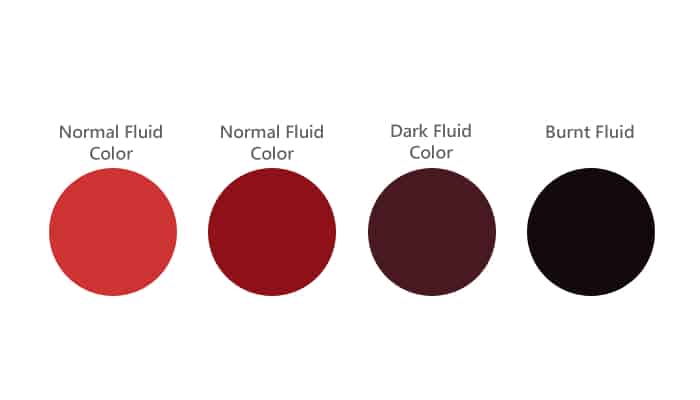Transmission Fluid Specifications for Your Honda Pilot
When it comes to keeping your 2006 Honda Pilot running smoothly, one of the most crucial components to pay attention to is the transmission fluid. Using the right type of transmission fluid is essential for the longevity and performance of your vehicle’s transmission system. Let’s break down what you need to know.
Manufacturer’s Recommendations
| Popular posts |
|---|
| What to do to prolong the life of your manual gearbox |
| Automatic transmission: what it is, how it works |
Honda has specific guidelines for the type of transmission fluid that should be used in the 2006 Pilot. According to Honda’s official specifications, the recommended transmission fluid is:
- Honda ATF-Z1 (or equivalent)
This fluid is designed to meet the unique requirements of Honda’s automatic transmissions, ensuring optimal performance and protection.
Why Use Honda ATF-Z1?
Using the manufacturer-recommended fluid is not just a suggestion; it’s a necessity. Here’s why:
1. Compatibility
Honda ATF-Z1 is formulated specifically for Honda vehicles. It contains additives that enhance performance, reduce wear, and prevent overheating. Using a non-Honda fluid can lead to compatibility issues, which may result in transmission failure.
2. Performance
This fluid is engineered to provide smooth shifting and optimal response from your transmission. It helps maintain the hydraulic pressure necessary for proper operation, ensuring that your vehicle shifts gears smoothly and efficiently.
3. Protection
Honda ATF-Z1 includes anti-wear additives that protect internal components of the transmission. This is crucial for preventing premature wear and tear, which can lead to costly repairs down the line.
Fluid Characteristics
Understanding the characteristics of Honda ATF-Z1 can help you appreciate its importance:
- Viscosity: The fluid has a specific viscosity rating that allows it to perform well under various temperature conditions.
- Thermal Stability: It is designed to resist breakdown at high temperatures, which is essential for maintaining performance during heavy use.
- Oxidation Resistance: The fluid is formulated to resist oxidation, which can lead to sludge buildup and decreased performance.
Where to Find the Right Fluid
You can find Honda ATF-Z1 at most Honda dealerships, as well as at reputable auto parts stores. Always check the label to ensure that you are getting the correct fluid. Some aftermarket brands may claim compatibility, but it’s best to stick with what Honda recommends to avoid any potential issues.
In summary, using the right transmission fluid is critical for the health of your 2006 Honda Pilot’s transmission. Stick with Honda ATF-Z1 to ensure that your vehicle operates at its best and to avoid costly repairs down the road.
Recommended Oil Brands for Your Honda Pilot’s Transmission Fluid
When it comes to maintaining your 2006 Honda Pilot, choosing the right transmission fluid is just as important as using the correct type. While Honda ATF-Z1 is the manufacturer-recommended fluid, many owners have shared their experiences with various brands that meet or exceed Honda’s specifications. Let’s dive into some of the most recommended oil brands based on feedback from forums and owner experiences.
Honda Genuine ATF-Z1
It’s no surprise that the most recommended fluid comes straight from the manufacturer. Honda Genuine ATF-Z1 is the gold standard for your Pilot’s transmission. Many owners swear by it for several reasons:
- Perfect compatibility with Honda’s transmission systems.
- Consistent performance and smooth shifting.
- Proven track record among Honda enthusiasts.
Owners often report that using Honda Genuine ATF-Z1 has resulted in fewer transmission issues and better overall performance.
Valvoline MaxLife ATF
Valvoline MaxLife ATF is another popular choice among Honda Pilot owners. This fluid is designed to be compatible with a variety of automatic transmissions, including those in Honda vehicles. Here’s what users have to say:
- Many owners appreciate its versatility, as it can be used in multiple vehicle makes and models.
- Users report smoother shifts and improved responsiveness after switching to Valvoline MaxLife.
- It contains additives that help prevent wear and extend the life of the transmission.
While it may not be the OEM fluid, many owners have had positive experiences using Valvoline MaxLife ATF in their Honda Pilots.
Mobil 1 Synthetic ATF
Mobil 1 Synthetic ATF is another brand that frequently comes up in discussions among Honda Pilot owners. This synthetic fluid is known for its high performance and longevity. Here’s what the community has to say:
- Owners appreciate the synthetic formulation, which offers better protection against heat and wear.
- Many report that it improves shifting performance, especially in extreme conditions.
- It’s often praised for its ability to maintain viscosity over a wide temperature range.
If you’re looking for a synthetic option, Mobil 1 is a solid choice that has garnered positive feedback from many Honda owners.
Castrol Transmax Import Multi-Vehicle ATF
Castrol Transmax Import is another fluid that has gained traction among Honda Pilot owners. This fluid is designed specifically for import vehicles and is compatible with Honda’s specifications. Feedback includes:
- Many users report that it provides smooth shifting and reliable performance.
- It’s often noted for its ability to reduce transmission noise.
- Owners appreciate its affordability compared to OEM fluids.
If you’re looking for a budget-friendly alternative that still meets Honda’s requirements, Castrol Transmax Import could be worth considering.
Royal Purple Max ATF
Royal Purple Max ATF is a premium synthetic fluid that has made a name for itself among performance enthusiasts. Here’s what users have shared:
- Many owners report noticeable improvements in shifting performance and responsiveness.
- It’s praised for its high-temperature stability and protection against wear.
- Some users appreciate the added performance benefits, especially in towing or heavy-duty applications.
While it may be on the pricier side, Royal Purple Max ATF is often recommended for those who want the best performance from their transmission.
Final Thoughts from the Community
When it comes to choosing a transmission fluid for your 2006 Honda Pilot, the experiences shared by fellow owners can be invaluable. While Honda Genuine ATF-Z1 remains the top recommendation, many alternative brands have proven effective and reliable. Always consider your driving conditions, budget, and personal preferences when making your choice. Remember, the right fluid can make a significant difference in the performance and longevity of your transmission.
Change Interval for Your Honda Pilot’s Transmission Fluid
Keeping your 2006 Honda Pilot’s transmission fluid fresh is crucial for maintaining optimal performance and longevity. The change interval for transmission fluid can vary based on driving conditions, but general recommendations provide a solid guideline.
Recommended Change Interval
For the 2006 Honda Pilot, the general recommendation for changing the transmission fluid is every 30,000 to 60,000 miles (approximately 48,000 to 96,000 kilometers). However, this can depend on several factors:
- Driving Conditions: If you frequently drive in stop-and-go traffic, tow heavy loads, or operate in extreme temperatures, you may need to change the fluid more often.
- Fluid Condition: Regularly checking the condition of your transmission fluid can help you determine if it needs changing sooner. If the fluid appears dark or has a burnt smell, it’s time for a change.
According to the Honda owner’s manual and various automotive experts, adhering to this change interval can help prevent transmission issues and extend the life of your vehicle.
Partial Transmission Oil Changes
In many cases, a complete transmission fluid change involves removing the transmission from the vehicle, which is a labor-intensive and costly process. As a result, many owners opt for partial transmission oil changes, also known as “drain and fill” procedures. Here’s what you need to know:
1. What is a Partial Change?
A partial transmission oil change involves draining a portion of the old fluid and replacing it with new fluid. This method is less invasive and can be performed without removing the transmission from the vehicle.
2. Benefits of Partial Changes
- Cost-Effective: Partial changes are generally less expensive than full fluid changes, making them more accessible for many owners.
- Less Downtime: Since this process is quicker, you can get back on the road sooner.
- Regular Maintenance: Performing partial changes at regular intervals can help keep the transmission fluid fresh and maintain performance.
3. Limitations of Partial Changes
While partial changes are beneficial, they do have limitations:
- Fluid Contamination: A partial change may not remove all the old fluid, which can lead to contamination over time.
- Additive Depletion: Some additives in the fluid may become depleted, and a partial change won’t fully replenish them.
Statistical Data and Authoritative Sources
According to the American Transmission Repair Association (ATRA), regular maintenance, including fluid changes, can significantly reduce the risk of transmission failure. They report that nearly 90% of transmission failures are due to overheating and fluid contamination, both of which can be mitigated by adhering to recommended change intervals.
Additionally, a study published by the Society of Automotive Engineers (SAE) emphasizes the importance of maintaining clean transmission fluid for optimal performance. The study indicates that vehicles with regularly changed transmission fluid experience fewer issues and have a longer lifespan.
In summary, while the recommended change interval for your 2006 Honda Pilot’s transmission fluid is every 30,000 to 60,000 miles, opting for partial changes can be a practical approach to maintaining fluid quality without the need for extensive service. Regular maintenance is key to ensuring the longevity and reliability of your transmission system.
What Color Should Transmission Fluid Be?


